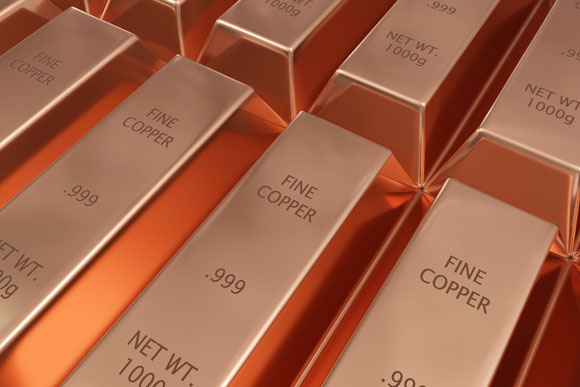Copper MMI: Traders take profits after copper price surges to 10-year high

The Copper Monthly Metals Index (MMI) picked up by 12.6% for this month’s reading, as the copper price surged to a 10-year high last month.

The MetalMiner Best Practice Library offers a wealth of knowledge and tips to help buyers stay on top of metals markets and buying strategies.
Copper price rise
The copper price picked back up in February after China’s Lunar New Year celebration (a traditionally slower time of year for economic activity in the country).
The LME three-month price surged to $9,563 per metric ton, reaching an approximately 10-year high.
Since then, however, the price has pulled back. The three-month price closed Thursday at $9,048 per metric ton.
“This is a classic overbought market in which traders sought to take some profits,” MetalMiner CEO Lisa Reisman explains. “With the exception of tin, all of the non-ferrous metals traded down. And though nickel looks weaker (as does lead), most of the non-ferrous metals remain in their uptrend, as does the ferrous metals complex.”
Earlier today, MetalMiner’s Stuart Burns touched on the trajectory of oil prices. As readers of our Annual Outlook — for which we released our March update earlier this week — know, oil prices are a key economic factor MetalMiner considers when analyzing commodities markets.
“Copper has taken much of its cue from oil prices, which remain at or around $65/barrel along with strong demand buoyed by the stimulus package just passed in the US House of Representatives,” Reisman adds. “Moreover, copper has very strong fundamentals — strong demand and not as much supply — which forms the basis of the copper narrative.”
Copper mine production slips 0.2%, supporting copper price
Last month, the International Copper Study Group reported global copper mine production fell by 0.2% through the first 11 months of 2020.
Concentrate production rose by 0.4%, while solvent extraction-electrowinning dropped by 2.2%.
Chile, the top copper producer, saw its output relatively unchanged from the previous year.
Peru, meanwhile, the No. 2 copper producer, saw significant impacts from the COVID-19 pandemic earlier in the year. Peruvian copper mine production dropped by 13.5% during the first 11 months of the year.
Refined copper production, however, rose by 1.8% during the aforementioned period.
As the rest of the world ramps up its economic recovery, demand for copper will only increase (as its strength over the last year is in large part derived from China’s economic recovery).
According to consulting company GlobalData, however, copper mine production will likely bounce back this year. In turn, this could depress the copper price.
GlobalData forecast copper production to rise by 5.6% in 2021, in part due to growth in Chile, Peru, Australia, Indonesia and the US.
In Peru, the pandemic disrupted activity at the Antamina mine, which sat inactive during April and May. Production at Antamina fell 23.6% year over year during the first nine months of 2020, GlobalData reported. Meanwhile, Freeport-McMoRan idled the Cerro Verde mine for nearly three weeks between March and April.
Glencore copper output flat; BHP forecasts tight market
Meanwhile, miner Glencore reported its 2020 copper output would have been flat when excluding its Mutanda operation, which it placed on care and maintenance.
In total, however, Glencore’s copper output reached 1,258.1 kt, or down 8% year over year.
“Own sourced copper production of 1,258,100 tonnes was 113,100 tonnes (8%) lower than 2019, mainly reflecting Mutanda being on care and maintenance in 2020 (partly offset by Katanga’s successful ramp-up), with Covid-19 related suspensions being a much smaller factor,” Glencore said.
Elsewhere, miner BHP last month released its fiscal year 2020 economic and commodity outlook. The miner expects the demand-supply balance for copper to remain “relatively tight.”
“The storyline for copper in the first half of calendar 2020 was a balanced blend of industry specific fundamental factors and swings in broader macro sentiment,” BHP’s outlook notes. “The second half was less balanced, with specific fundamental factors taking a relative back seat to general macroeconomic tailwinds.
“Copper demand trends in China (roughly half of refined demand) have been starkly different to the rest of the world. Chinese semis demand was flat in calendar 2020, while ex–China markets declined by –9 per cent.”
Actual metals prices and trends
China copper scrap fell 0.6% month over month to $5,929 per metric ton as of March 1. China primary cash copper rose by 16.1% to $10,466 per metric ton.
The LME three-month copper price surged by 15.8% to $9,121.
Copper producer grades 110 and 122 rose by 12.1% to $4.92 per pound. Grade 102 rose by 11.5% to $5.14 per pound.
Get social with us. Follow MetalMiner on LinkedIn.



Leave a Reply